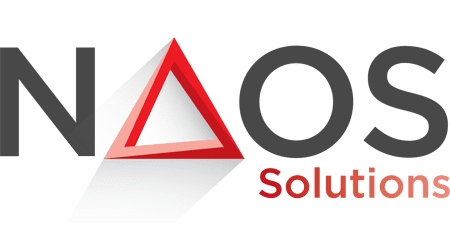Outsourcing payroll isn’t just a cost-cutting tactic—it’s a strategic move for CFOs who want tighter control, better compliance, and more time to focus on growth. If you’re tired of juggling spreadsheets, chasing tax deadlines, or losing sleep over audit risks, this guide is for you.

With over 10 years in the industry, NAOS Talents understands the operational pressures that finance leaders face. That’s why this blog goes beyond theory to give you a clear, practical look at what payroll outsourcing involves—what you keep in-house, what you hand off, and how to spot the right partner. You’ll get a CFO-specific checklist, learn how providers handle local compliance and automation, and see how others in Egypt and the MENA region are already gaining measurable value.
By the end, you’ll know exactly how to turn your payroll process into a leaner, safer, and more strategic function.
WHAT PAYROLL IS REALLY COSTING YOU
Most CFOs can rattle off the monthly payroll figure, but the actual cost of managing payroll in-house is harder to pin down. It’s almost always higher than you think.
To start with the obvious, your finance or HR team spends hours every pay cycle on data entry, cross-checking, tax calculations, and compliance. That’s time pulled away from deeper financial planning, cash flow modeling, or preparing for audits.
Additionally, there are hidden costs. Software tools that don’t integrate, duplicate processes across departments, create version-control headaches in spreadsheets, and lead to costly errors all contribute to these expenditures. Even a single tax update or misclassified worker can trigger penalties that outweigh the savings of keeping payroll in-house.
The truth is that payroll done in-house is often less controlled, not more. You might think you’re gaining visibility, but you’re managing complexity. Your finance teams spend their energy chasing down timesheets and resolving discrepancies.
That brings us to opportunity cost. What could your team accomplish if it weren’t stuck in the weeds every month? They may perform more scenario modeling or a deeper budget analysis. In short, they’ll have more time to do the strategic work that moves your business forward.

Are You Leaking Money Through Your Payroll Process?
Quick Self-Audit for CFOs
- Are payroll errors showing up in your audits or employee complaints?
- Does your payroll process rely on more than one platform or manual steps?
- Are you spending more than 5 hours per pay cycle on payroll processing?
- Have you paid any late fees, interest, or fines in the last 12 months?
- Are your finance leads spending time on data entry instead of analysis?
If you checked two or more, it may be time to rethink your approach.

WHAT OUTSOURCING PAYROLL LOOKS LIKE (NO, IT’S NOT A BLACK BOX)
Outsourcing payroll doesn’t mean that you’ll lose control. Instead, you’ll redesign the process so it finally works for you.
Many CFOs still picture outsourcing as a black box. You send off your data, cross your fingers, and hope it all runs smoothly. That was payroll a decade or so ago. Today, providers offer transparency, automation, and integration with your existing systems.
In modern payroll outsourcing, you partner with a provider that runs everything on a secure, cloud-based platform. Your employee data flows directly from your HRIS or time-tracking system. Payroll gets processed on schedule, with taxes calculated and filed automatically, including federal, state, and local requirements.
What stays in-house? Oversight and control. You’ll still have complete visibility into every pay run with real-time dashboards and on-demand reports.
What gets offloaded are the calculations, compliance updates, tax submissions, and direct deposits. All of this is handled by people and platforms that do this every single day, on a large scale.
The top payroll providers also use intelligent automation and well-designed workflows to minimize errors. For example, tax codes are automatically updated, and the system may also send alerts for anomalies. Some tools also feature built-in audit trails, while others include dashboards that integrate with your general ledger, providing instant insights into payroll costs, headcount trends, and accruals.

You’re not outsourcing in the traditional way, which has too often led to a loss of control. Instead, you optimize the process through expert systems, achieving a cost-effective and compliant solution that frees your team to focus on budgeting and strategic planning.
HOW TO CHOOSE THE RIGHT PAYROLL OUTSOURCING PARTNER
Outsourcing payroll is undeniably a transformative move, but only if you select the right partner. As a CFO, here’s what to look for and what to avoid.
Local Compliance Expertise
Tax laws aren’t static and shift constantly. Your provider should have up-to-date expertise in the specific countries in which you operate, not just a vague promise of “compliance coverage.”
Ask if they actively track local tax law changes and if they can manage filings for multiple jurisdictions simultaneously. If you also hire part-time workers, ask about their handling of contractors. If they hesitate on any of these, keep looking.
Built-In Scalability
You may have 50 employees today and 150 in 18 months. Similarly, your businesses may be entering new states, markets, or even countries.
Your payroll partner should scale with you without performance issues, pricing surprises, or complicated renegotiations. For them to be able to do that, they should offer tiered service packages and global or multi-state processing capabilities. If they provide multi-entity support, that’s even better.

Modern, Interoperable Tech Stack
If your provider is still emailing spreadsheets and manually adjusting withholdings, that’s a red flag. The best partners operate on cloud-native platforms with APIs that seamlessly integrate with your existing HRIS, time-tracking, and accounting systems.
Some features you should expect are:
- Automated tax filing and updates
- Integrated reporting dashboards
- Portals for employees
- Secure data access and role-based permissions
These provisions reduce risk and increase transparency. Therefore, ensure you gain access to as many of them as possible.
Radical Transparency
You should never be left guessing. The right partner offers complete visibility into timelines, workflows, data, and pricing. That includes a clear view of what happens before, during, and after each pay cycle.
You should also inquire about the approach they use for audit trails.
Strong SLAs and Proactive Support
Since you’re trusting the payroll partner with one of your most critical functions, look for guarantees rather than vague assurances. A reputable provider should offer written service level agreements (SLAs) and commit to specific response times and resolution windows. Some providers may also assign a dedicated account manager or team to you.
Most importantly, support should be proactive. You shouldn’t have to chase them when something feels off; they should alert you to the issue.
Red Flags to Watch Out For
Sometimes, even the most polished sales decks hide weak spots. The following are a few warning signs to look for.
- Data Security As An Afterthought: If they can’t clearly explain how your data is encrypted, stored, and protected, walk away.
- Manual-Heavy Processes: You want to move forward, not backward. If a provider is still keying in data forms or relying on face documents, they’re likely not for you.
- Unclear Fee Structures: Avoid any provider that bundles “extras” into hidden charges. Similarly, if they’re vague about pricing or fail to answer your questions, consider other options.
Another notable red flag is a one-size-fits-all service. Payroll is not a plug-and-play operation, so if there’s no customization, they’re not serious about your business.
Smart RFP Tips for Outsourcing Payroll
When you issue an RFP, your questions should help determine how the provider operates. Here are some questions to ask.
- How do you maintain compliance across jurisdictions?
- What automation tools do you use for tax updates and filings?
- Describe your system’s integration capabilities with [your HR or finance tool].
- Provide a sample dashboard/report from a typical client.
- What are your average error rates, and how are they resolved?
- Can you provide three client references from companies of similar size/industry?
Make it clear to them that you’re looking for a long-term partner who can work with your systems and manage payroll as a level of financial performance.

THE STRATEGIC CFO’S CASE FOR OUTSOURCING PAYROLL
For CFOs, efficient payroll management can improve financial resilience and operational clarity. Outsourcing payroll provides the insights and precision necessary to save costs and maintain your business’s competitiveness. Additionally, you can leverage dedicated expertise and advanced technology to achieve better financial performance.
An essential role of payroll outsourcing is evident in risk management. For example, Egyptian businesses faced unpredictable payroll costs and compliance risks during periods of economic volatility. Upon partnering with payroll providers, they can handle these fluctuations efficiently.
Similarly, companies in the region have reported improved labor cost optimization and enhanced reporting accuracy when working with payroll providers. Outsourcing also facilitates real-time visibility of labor costs, which supports sharper margin tracking and faster course correction. Integrated platforms surface insights that were once buried, like overtime trends, benefits allocation by department, or workforce anomalies, before they become budget issues.
In a previous article, we compared the costs of in-house and outsourced payroll management in Egypt, identifying a potential reduction in payroll costs with the latter approach. The reduction stemmed from the elimination of overhead costs associated with in-house management, including employee salaries, benefits, and training.
CONCLUSION
As we’ve established, outsourcing payroll helps you save costs. However, it also achieves more in terms of freeing up employee time and enhancing financial resilience. The modern payroll outsourcing approach also helps CFOs maintain a certain level of control over their operations while building a more efficient system.
At NAOS Solutions, our payroll outsourcing services are designed for CFOs who need full visibility and precision without the administrative burden. Our NAOS Talents do everything from calculating payslips and managing tax deductions to transferring wages so your team can stay focused on the bigger picture.

